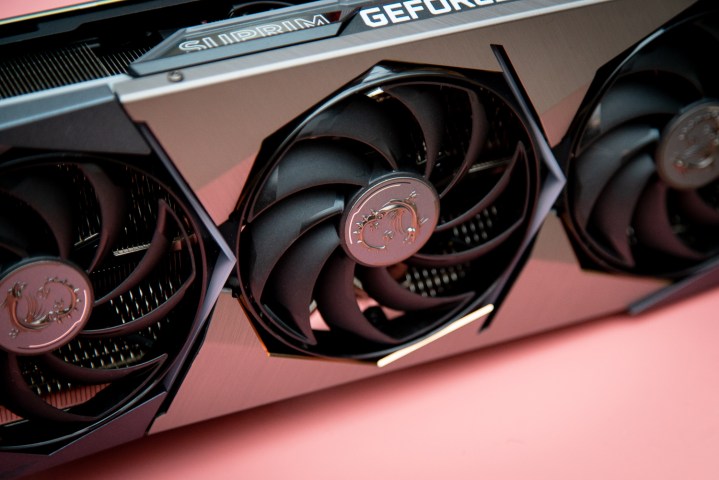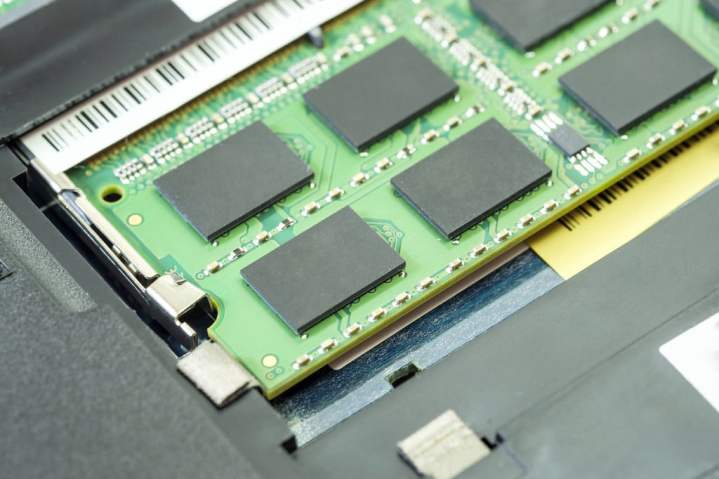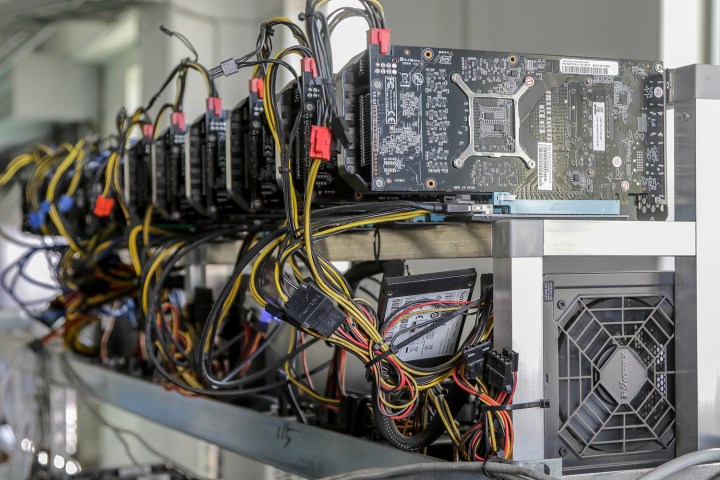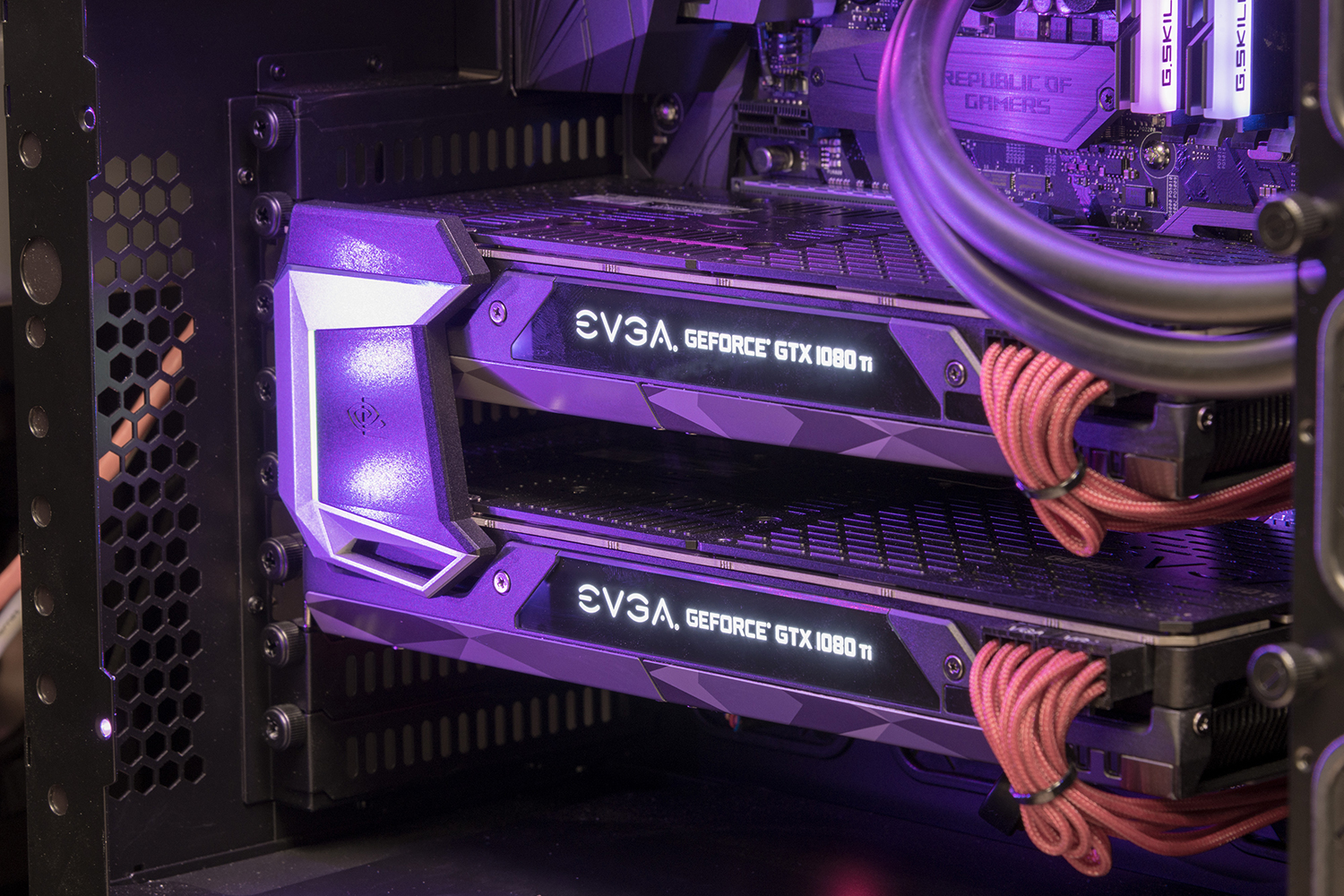In the midst of a crypto meltdown, GPU mining operations are shutting down and liquidating their most valuable asset: desktop GPUs. Although new GPUs are selling for close to MSRP for the first time in nearly two years, the used market is now flooded with cheaper, used GPUs that were used for mining. Modern GPUs selling for much lower than MSRP is certainly an enticing prospect.
However, there are quite a few reasons to be cautious of buying GPUs that were once used in mining rigs, to the point where buying a used mining GPU doesn’t make sense at any price point.
Problems with buying a used mining GPU
Although mining GPUs don’t inherently come with problems, the risks usually outweigh the cost savings. Here are the main risks when picking up a used graphics card used for mining.
Worn out fans

In a typical PC, a GPU’s fans might only see action for a few hours a day, and that’s even more true for GPU models that don’t allow the fans to spin until a certain temperature is reached (usually around 50 C). While malfunctioning GPU fans aren’t exactly uncommon, it’s extremely rare that GPU fans become totally broken. It normally takes years for the fans to fail on a GPU that’s just used for normal desktop stuff like web browsing, gaming, and work.
But because mining GPUs are expected to be running 24/7, working on medium to heavy weight tasks, the fans are going to be spinning at a higher RPM all the time. Even really good fans will wear out much sooner than expected because gaming GPUs aren’t usually designed for doing an unending workload.
One of the most annoying parts about GPU fans is that they’re not usually quick and easy to replace. If you buy a used mining GPU and the fans fail, then you only have three options: Send it to the original manufacturer for repair, find replacement fans, and fix the GPU yourself, or enjoy your new paperweight.
Dying VRAM

Another cause for concern is VRAM. Any kind of memory has a lifespan, and GPU memory is no exception. According to a report from Wccftech, one user who bought an RTX 3080 that was used for mining said his GPU, which is supposed to have 10GB of VRAM, only had 8GB. It turns out that some memory modules had actually died and the card was reprogrammed to work with what remained, which was 8GB.
Having fewer VRAM modules not only reduces capacity (which is important for good GPU performance) but also memory bandwidth, which is the amount of data that can be transferred to and from the VRAM in a second. Fewer modules mean less bandwidth, so even if a GPU has enough capacity, a reduction in bandwidth often leads to a reduction in performance.
The worst-case scenario isn’t getting a GPU with less VRAM than you expected, however. It would be even worse to get a GPU with memory on the verge of failure because it’s highly likely that it’ll just die during usage and become basically useless. It’s almost impossible to replace memory modules on your own, so the only realistic repair option is to send it to the original manufacturer for repair.
Also, you have no warranty
Not only are used mining GPUs likely to be in poor health, but you can’t rely on a manufacturer’s warranty to cover it. Even if a GPU’s warranty hasn’t expired yet and can be transferred from the original owner, there’s a very good chance warranty coverage will be denied. The terms and conditions for many companies’ warranties (such as EVGA, Asus, and Gigabyte) explicitly state that GPUs used for mining are not covered. Other companies merely state that “improper use,” “neglect,” or “misuse” will void the warranty, and we can imagine mining falls under at least one of these categories.
Another way used mining GPUs might lose warranty coverage is due to modification. Pretty much every manufacturer will withhold warranty coverage if the cooler is taken off, and manufacturers have ways of checking whether or not this has happened, usually by putting a sticker over a screw. If that sticker is damaged or removed, the warranty is void, and since miners don’t expect warranty coverage anyway, a used mining GPU is likely to have been modified at some point or another.
Should you buy a mining GPU?

This is why buying a used mining GPU at almost any price is ludicrous. Not only are these GPUs likely on the verge of death, but the odds of getting any warranty coverage are extremely slim to none, which means any repairs will be very expensive. The worst-case scenario is that no repairs are possible and you need to buy another GPU. With all these risks, the prospect of buying a used mining GPU just doesn’t make sense.
But here’s another question: How do you avoid buying a used mining GPU? Miners have every incentive to conceal that the GPUs they’re selling were used in mining, so it’s hard to expect most of them to be upfront about it. GPU listings that are at a low price or do not include the original box might be suspicious, but the most obvious sign that a GPU was used for mining is probably the seller itself. If a seller is selling multiple GPUs at once (especially if they’re not all the same model), there’s a good chance they were from a mining rig.
Editors’ Recommendations
